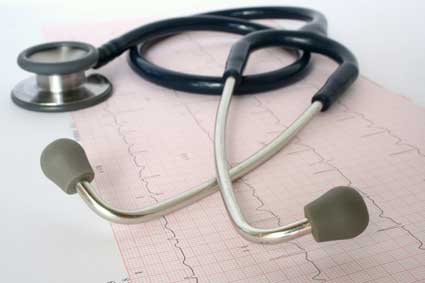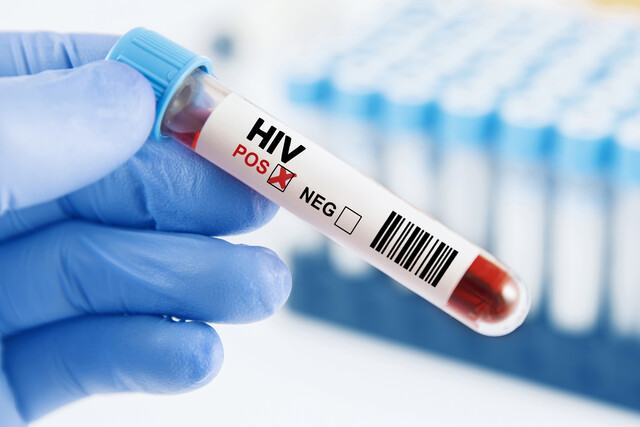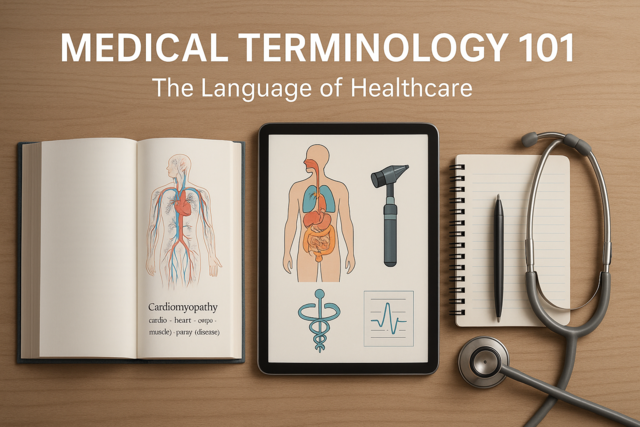Introduction
Diabetes affects millions of people around the world regardless of socioeconomic factors geographic location and gender or race. The anatomy of diabetes and different types of diabetes are the focus of this first article on understanding, diagnosing, and managing diabetes.
There are several different types of diabetes, and understanding the difference between them and how they are treated will help you make better and more educated decisions regarding your or a loved one's care.
According to the National Diabetes Information Clearinghouse and the National Institute of Diabetes and Digestive and Kidney Diseases, chances are that you know somebody who has diabetes. These institutes estimate that nearly 24 million people in the United States alone have diabetes, and nearly five million of those individuals don't know it.
Unfortunately, diabetes, which for the most part used to be considered an "adult's disease", today now afflicts younger individuals because of increasingly poor diets, lack of exercise, and obesity. Diabetes may also be caused by other conditions, including pancreatic diseases, endocrine system abnormalities or disease processes, and even infections and medications.
Anatomy of Diabetes
Diabetes is a disease process that affects the endocrine system. The endocrine system involves the body's glands. Also known as diabetes mellitus, the condition affects the body's:
- Secretion of hormone
- Metabolism regulation
- Growth
- Sexual development and the ability to reproduce
- Thyroid
- Parathyroid
- Thymus
- Adrenal glands
- Pancreas
- Pituitary gland
- Male and female sexual glands including the testes and ovaries
The pancreas is an important organ involved in the endocrine system. If the pancreas secretes too much or too little of specific hormones, your health and wellness and your overall body function can literally be thrown out of whack.
Diabetes affects the way the body digests food. Normally, food is broken down into a form of sugar found in the blood, called glucose, the body's main source of energy or fuel. After food digests, glucose flows through the bloodstream and into the body's cellular tissues. However, in order for glucose to actually get into the body's cells, a hormone known as insulin must be present in the body. Insulin is created by the pancreas, one of the largest glands in the body, located behind the stomach.
Under optimal conditions, the pancreas produces the exact correct amount of insulin needed by glucose to move into cells. However, with individuals diagnosed with diabetes, the pancreas either doesn't produce enough or doesn't create any insulin for this well-balanced function. Sometimes, a person's body doesn't react properly to the insulin produced by the pancreas. Such conditions result in a form of diabetes, depending on which condition is diagnosed.
When the body doesn't produce the hormone insulin or doesn't react to it properly, glucose builds up in the blood. Excess glucose is excreted out of the body in urine, resulting in a body left without its main source of fuel.
The pancreas itself is made up of special cells and tissues. These tissues secrete special digestive enzymes through ducts; these enzymes are important in the processing and digestion of proteins, carbohydrates and other vital nutrients found in the body.
Pancreatic tissues are made up of three different types of cells:
- Alpha
- Beta
- Delta
Alpha cells are responsible for the manufacture and release of glucagon, a special hormone that raises blood glucose levels in the body. Beta cells are responsible for regulating blood sugar levels in the body, and can produce glucose-lowering insulin in response to high blood sugar levels. Delta cells are responsible for producing a hormone called somatostatin, which is believed to be directly responsible for actions of both alpha and beta cells.
A few basic vocabulary words are essential to understanding the process through which the pancreas functions as well as what can happen when these balances are off. Here are some of the basics:
- Glucose - a form of sugar created in the body that circulates in the blood, used for energy by the body's cells.
- Glucagon - a hormone produced by the pancreas. This hormone is important in raising blood glucose levels in the body when they're low.
- Insulin - a hormone produced by the pancreas that regulates metabolism of fat and carbohydrates in the body and controls levels of glucose in the blood.
Type One Diabetes
Type One diabetes, also commonly Type I, is a form of diabetes where an individual's body makes very little insulin or none at all. Such individuals must take oral or injectable insulin in order to enjoy optimal health and wellness. Type One diabetes is also known as juvenile diabetes, but this doesn't mean the condition just affects children. This is because most forms of this type of diabetes are diagnosed in either childhood or adolescence. However, adults can develop Type One diabetes.
Type Two Diabetes
Type Two diabetes (also designated as Type II) is the form of the disease where an individual's body does make insulin, but for unknown reasons, the body is resistant to it. This form of the disease is also known as adult onset diabetes. Today, more younger people and children are diagnosed with Type Two diabetes as a direct result of obesity.
Type Two diabetes is the most common form of the disease and accounts for nearly 95% of individuals diagnosed. According to statistics, diabetes is the sixth leading cause of death in the United States. This form of diabetes is increasingly treatable, and many people can reduce their chances of developing the disease through lifestyle changes such as diet and exercise. Other individuals diagnosed with pre-diabetic conditions and even some forms of diabetes can actually reverse the progression of the disease and lead normal, happy, healthy lives.
Gestational Diabetes
Introduction
Many people experience symptoms of diabetes for a long time before they're even diagnosed. This is because symptoms can be relatively mild and are often chalked up to temporary conditions that may be alleviated through lifestyle and diet changes. Other times, people are afraid to receive a diagnosis of illness or disease and put off visiting their doctor. We strongly suggest you don't do that!
This article will focus on the common symptoms of different types of diabetes, what to expect when you do visit the doctor, and a variety of testing methods that are utilized to help your doctor diagnose the disease.
Symptoms of Diabetes
Symptoms of diabetes are often overlooked or are confused or misinterpreted as something else. This is because many of the early symptoms of diabetes are intermittent in nature. Understanding the most common symptoms of the disease will help you be more aware of your body and its reaction to certain conditions.
However, if you experience a symptom or two similar to those listed below, don't automatically assume you have diabetes. If you notice that you have experienced changes in your body, or are worried about any new developments in your body's ability to function, schedule a visit with your doctor. You may not have diabetes, but you may have other issues that can be addressed effectively.
Some of the most common symptoms of diabetes may include but are not limited to:
- A sensation of thirstiness or periods that you're increasingly thirsty for no apparent reason. For many, excessive thirst is often written off as weather-related, what you ate for dinner, or the fact that you haven't been drinking your required fluid intake (averaging around 64 oz of water/fluid a day).
- An increased appetite - many individuals with diabetes may experience a sensation of near constant hunger, caused by the body's craving for certain nutrients or food components.
- Increased urination - some people find that they go to the bathroom more frequently, despite a lack of increase in hydration.
- Changes in overall body conditions such as irritated or gum tenderness, skin infections, or bladder or yeast infections. Any incidents of changes in your dental health, your skin, or increased frequency in either bladder or yeast infections are a sign that the chemical balances in your body are off.
- Increased sensation of overall weariness and fatigue
- Incidence of blurred vision
- Bruises or sores that are slow to heal
- Any increase in blood pressure
-
Remember that Type One diabetes generally occurs during childhood or your teen years, and Type Two diabetes, which is the most common, can develop at any age. Actually, many individuals entering their 50s and 60s are diagnosed with Type Two diabetes, and in most cases, this diagnosis is directly related to weight, diet, and lifestyle habits, and is often preventable.
Visiting the Doctor
-
If you notice any of the above changes in your body that can't be explained due to temporary circumstances, schedule a visit with your doctor. If it's a child experiencing such symptoms, schedule a visit with their pediatrician as soon as possible. When it comes to diabetes, the sooner diagnosis is made, the sooner the treatments can begin, which can get diabetes under control faster, and in some cases, get rid of it that much sooner.
-
In most cases, you'll see your primary care provider or family doctor first. Keep a list of the specific conditions and symptoms that have been noticed, when they began, how long the symptoms last, and what you've done to help alleviate them.
Be prepared to have your blood drawn by the doctor, who will then check your blood sugar levels and other chemicals found in the blood. In order to benefit the most from your doctor's appointment, be prepared before stepping into the doctor's office. For example:- When scheduling your appointment, be aware of any restrictions for your diet or hydration, especially if you're taking of fasting blood sugar test.
- Prepare your list of symptoms and any unusual feelings or sensations that you've been experiencing. Be prepared to tell your doctor when the symptoms began.
- Prepare a brief family medical history and let your doctor know if there are any individuals in your family with a history of diabetes, especially your parents. Other conditions your doctor should be aware of include those family members diagnosed with strokes, heart attacks, other metabolic diseases or conditions or additional disease processes.
- Prepare a list of all the medications you take. These include prescribed as well as over-the-counter medications. This is very important, and you need to be honest with your doctor. Interactions, contraindications, and the effectiveness of medications prescribed by your doctor will determine their efficiency in treating your condition.
- Whenever possible, bring a companion along to your doctor's office visit. Many people are nervous and anxious when visiting the doctor and are unable to remember specifics regarding the appointment at a later point in time. A lot of information may be covered as well as suggestions offered by your doctor. Having someone else along will help you remember or record the important focus points of the visit.
- Before you go to the doctor's office, create a list of questions for your physician. If the doctor determines that you have diabetes, make sure to address your concerns regarding treatment and management. An additional visit or arrangement for consultation may be made with your doctor or other health care professional at that time to answer your questions in detail.
- Be prepared for your doctor to ask you a number of questions. Such questions may include but are not limited to asking you about the severity of your symptoms. This isn't always easy to answer, as what may seem mild to one person may be perceived as severe to another. Be as honest as possible in relation to your body and your beliefs regarding severity.
Testing Methods
Your doctor will want you to be as specific as possible about the period when you first started experiencing symptoms. He may be able to determine conditions considered pre-diabetic or diabetic in nature. He or she will also want to know if your symptoms are intermittent or chronic, or continuous.
A number of tests are available today to offer a relatively quick diagnosis of diabetes. Type One diabetes symptoms generally occur more rapidly and with more severity than those associated with Type Two diabetes. However, certain guidelines for testing for both types of diabetes are available and are recommended by major healthcare providers as well as the American Diabetes Association.For example, screening for at-risk individuals has been recommended by the ADA (American Diabetes Association). Individuals with a body mass index (BMI) over 25 and who have accompanying risk factors such as a sedentary lifestyle, high blood pressure, high cholesterol levels, or a history of any kind of heart disease should be screened for diabetes on a regular basis. Individuals over 45 years of age should also undergo baseline blood sugar screening and additional screening every three years afterward.Actual tests for Type One and Type Two diabetes involve what is known as in A1C glycated hemoglobin test. This test determines your average blood sugar level for a past period of between two and three months. How it does this is by measuring the percentage of blood sugar that is attached to the hemoglobin, or the part of the red blood cells that carry oxygenated protein. If your blood sugar level is high, the more hemoglobin is present that has sugar attached to it. A reading of 6.5% or higher on two different tests taken at two different times of glycated hemoglobin may indicate a positive diabetes diagnosis. In some cases, additional testing may be offered to confirm the diagnosis. Two of the most common of these additional tests include: - Fasting blood sugar test - a blood sample is taken. Blood sugar levels between 100 to 125 mg per deciliter (125 mg/dL) will offer a pre-diabetic diagnosis. Readings of over 126 mg per deciliter or higher on two tests are diagnosed as diabetes.
- Random blood sugar testing - your blood may be tested at random intervals during the day, most commonly in the morning, afternoon or evening, without fasting. Random blood sugar levels of over 200 mg per deciliter (200 mg/dL) suggest diabetic conditions.































